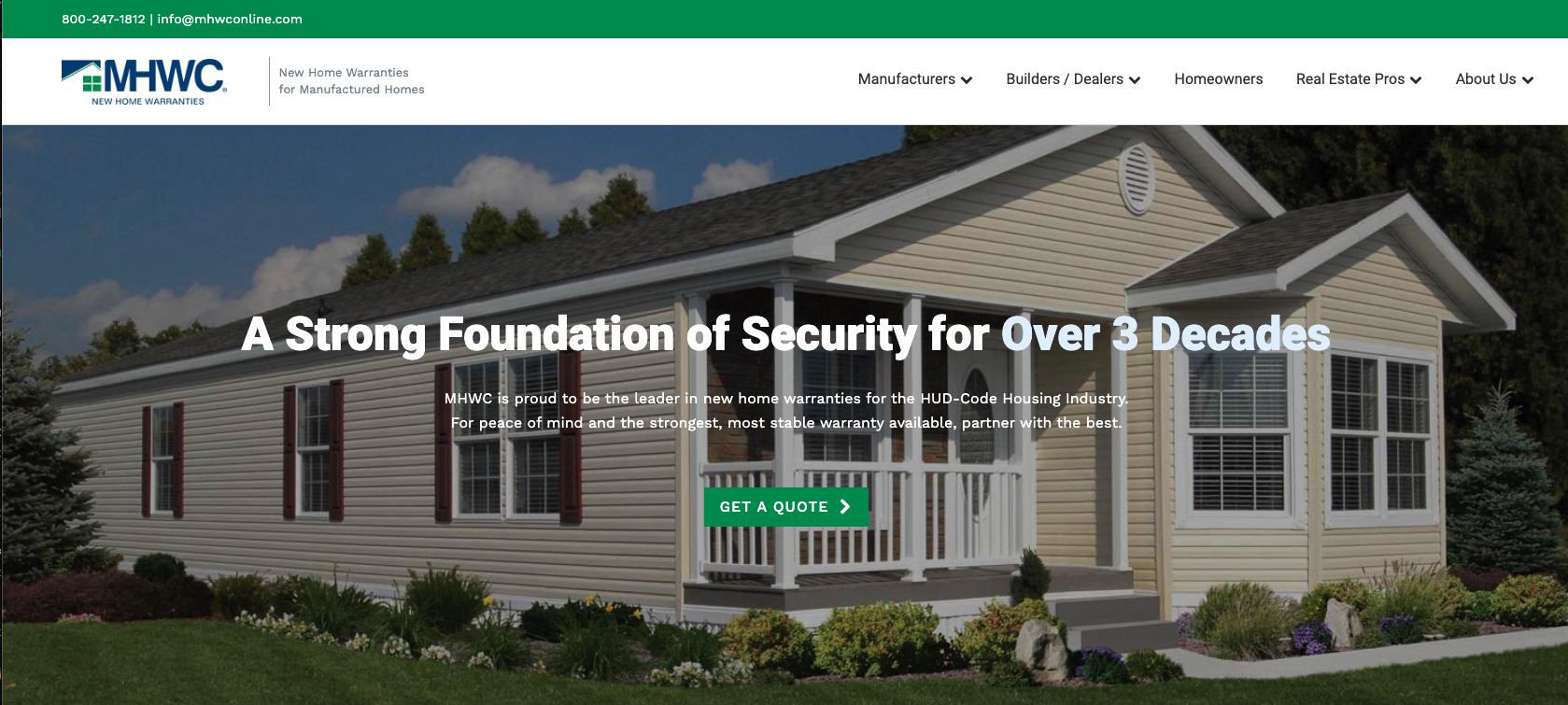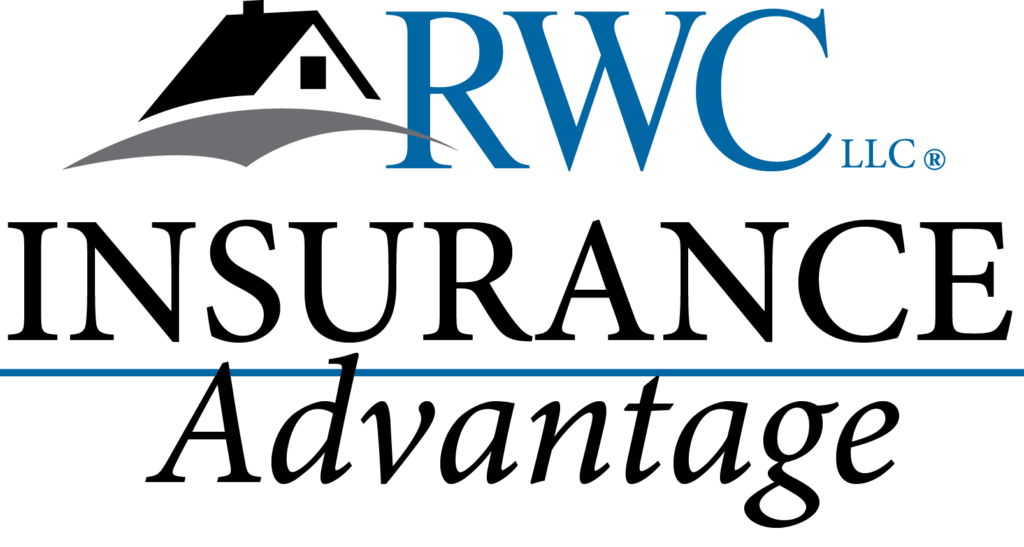No one would argue that a home is likely one of – if not the – biggest purchases you will ever make in your life. And while doubts associated with such a transaction are to be expected, incidents of buyer’s remorse seem elevated in the midst of the previous year’s wildly fluctuating market. 2022 was a tale of two extremes, and each was a trigger causing people to question their home-buying decisions for vastly different reasons.
The first half of the year saw record low mortgage rates, with properties listed high and often selling above the asking price. Buyers engaged in bidding wars, had little time to vet the properties and even less time to make an educated decision. In a rapid about-face, the latter half of 2022 saw the market flip when the Federal Reserve raised interest rates. Home prices leveled out and buyers had a bit more time to pick and choose their dream home, but in the end were faced with higher monthly mortgage payments.
While each scenario has clear reasons for inducing anxiety and remorse for the buyer, one thing that is universally helpful in alleviating any unnecessary worries is the experience and insight of a realtor. An experienced professional can guide home buyers in the correct direction and help them carefully review options. Torrence L. Ford, broker/owner of Atlanta’s RE/MAX Premier, stresses that working things out with anxious buyers is crucial, so sales do not fall through due to emotional rather than logical reasons.
His advice is to sit down with buyers and carefully review their options. In today’s climate, it is advisable to renegotiate with the seller. See if they are flexible with extending the closing date, thus allowing more time for the buyer to save money or possibly pay for a rate buydown. Another avenue to explore is to ask the lender if there are any credits available.
Ford also suggests informing the buyers that there exists the possibility of two more interest rate increases in the near future, so the time of affordability is now. The key is to “marry the payment and date the rate” – meaning, if you find a home you truly love and can afford, don’t let the current interest rates prevent you from purchasing it.
While cost is certainly a frontrunner for buyer’s remorse, it is not the only cause. When homes are selling quickly, there is not a lot of time for buyers to examine everything about the home and the general neighborhood. This is where a realtor plays a key role. They can make sure a buyer understands all the costs of the home, including property taxes, mortgage payments, and living expenses. It is not uncommon for a buyer to emerge victorious in a bidding war only to realize they cannot truly afford the prize.
It's important to reiterate to clients that homes almost always appreciate in value. If the house that is purchased turns out to be something less than a “forever home,” there is very likely a profit to be made in a future sale. Also, there is the potential for it to become a rental property and thus an additional source of income.
Seasoned realtors with years of experience can draw upon that to offer their clients as much information as possible for them to not only make an informed decision, but also manage their expectations. An example would be a buyer who won a bidding war above 12 others. Reminding them of the potential reasons for their victory – more favorable financing, a better closing date, a better relationship with the other realtor – could eliminate their worry that they overbid or overpaid.
It also helps to point out that most problems have workable solutions. If you find a home you love and the roof is bad, you don’t need to automatically take that property off your list. Rather, work with the seller to negotiate financing for the repair or replacement of the roof. Once again, expectations are managed and the potential for regret (at losing out on an otherwise desirable house) or remorse (for purchasing a less-than-ideal home) has been eliminated.
Perhaps most importantly, realtors should remind buyers that they should focus on the positive – which is the fact that they will be living in and enjoying their home for years to come!
On a positive note, despite the higher interest rates, the real estate industry seems to have returned to a state in which homes are staying on the market longer, allowing buyers time to do their due diligence and make an informed – and remorse-free – decision.
___________________________________________________________________________________________________________________________________
If you or your clients are still looking for added assurance and peace-of-mind check out the Key Estates Extended Warranty. Appliances and systems can break down and unfortunately, you never know when that will happen. It will be inconvenient, stressful and most of all, expensive. The best way to handle these complications is to be prepared. Buyers OR sellers can purchase coverage (through their Real Estate Professional or Builder) on appliances and systems such as water heaters, dishwashers, electrical systems, plumbing, ductwork and much more.
Not only is Key Estates affordable, but repairs or breakdowns are handled a little differently than the other guys do it. Key Estates allows homeowners to choose their own repair providers. Homeowners are NOT forced to choose ‘a guy’ from an ‘authorized list’. This allows the homeowner the freedom to choose someone they can trust and someone who will actually show up, and someone who has the experience and expertise to get the job done. Plus, there are no blackout coverage areas or claims forms to fill out. Concerned about the bones of the home? Key Estates has structural coverage, too. It’s worth checking into!
RWC, HOME of Texas & MHWC are proud to announce our Annual Sales Achievement Awards for 2022. In spite of an economy that continues to give some pause for concern, our small but mighty sales force worked tirelessly to bring as many new builders into our warranty family as possible. Results for the year cracked the Top 5 standings of most new members added going back to before the Great Recession (or the last 14 years or so). We want to acknowledge their efforts and thank them for representing us well in the industry. As sales go, so too does the company. With this group, we are in good hands.
 Outstanding Account Executive(s) of the Year: We had a tie this year. Rich McPhee (MD, NJ, DE and NYC metro area and parts of northern VA) and Staci Cool (IN, IL, OH, MI, WI and MN) both claimed top dog status in a category that encompasses much more than “simply” sales. They are true professionals, and we rely on them for their team leadership, knowledge, and steadfast support.
Outstanding Account Executive(s) of the Year: We had a tie this year. Rich McPhee (MD, NJ, DE and NYC metro area and parts of northern VA) and Staci Cool (IN, IL, OH, MI, WI and MN) both claimed top dog status in a category that encompasses much more than “simply” sales. They are true professionals, and we rely on them for their team leadership, knowledge, and steadfast support.
Most New Applications, Most Projected Homes, Most Big Builders (over 20 homes/year): Freddy Pesqueira (GA, FL, MS, TN, AL & KY) is a work horse, plain and simple. He is all over the southeastern corridor for us and his production shows. Because of his unmatched efforts, Freddy lays claim to several of our top awards for 2022.
Average Size New Member: Fred Taylor made his mark this year bringing in the biggest builders he could find, and we love that. Career builders are the foundation of our business, so we applaud Fred’s efforts. He also worked very hard at keeping all his members happy and was rewarded with the Best Retention Rate award as well.
Highest Approval Rate: Getting builders to apply can be a tall task sometimes. Making sure they get approved is yet another layer since we are quite selective when it comes to Membership qualification. Lydia Toscano led the charge in 2022 for getting the highest percentage of her applicants approved.
Congratulations to the entire Sales Force for a job well done. We also applaud the support team of Jody Lehman, Dana Myers, Agnes Brennan and Jana Watts, a group that makes the Account Executive’s job manageable for sure.
MHWC, RWC's sister organization providing manufactured home warranties to HUD-Code Manufacturers and Builder/Dealers, is excited to announce the launch of their newly redesigned website.
The streamlined menu is easy to navigate and the modern layout lends itself to a faster and better user experience. Have a look! Maybe you'll discover something new about the MHWC warranty. Our current and prospective members will find detailed info about our warranty products, instructions on how to become a member, resources for existing members, tradeshow schedules, FAQ, and can even contact us through one of the convenient online forms.
The RWC Member Services department has a new email address for members that need to return documents for approval or renewal:
MembershipAssist@RWCWarranty.com
Feel free to use it if you have a question about what is needed for your new membership application or how to get your renewal finished. It’s quick and easy and your request will go to a team of advisors instead of just one individual for the fastest service possible. We are working harder on our end so you can focus on building homes on yours!
Hypothetical situation. Let's say you've been contracted to build a custom home by someone who was referred to you by a satisfied customer. This individual owns the land and is financing the project out of his own pocket. You are the general contractor with complete authority over the entire project. The single family home you're building is a typical design and requires nothing out of the ordinary. Construction proceeds without a hitch. Then, with the house about 80% complete, fire breaks out in the basement on a Sunday night. The fire department determines a homeless person had decided to camp out in the unsecured structure and started a small fire to keep warm. Of course, it quickly got out of control and now more than $200,000 in materials have literally gone up in smoke.
 Your customer thought you were responsible for buying Builders Risk coverage as the general contractor. You were sure they had agreed to purchase a policy as the owner of the project. The written contract makes the general contractor, you, responsible for "all insurance." So you lose that argument. As someone who knew what they were talking about once observed, insurance isn't important until you need it. In trying to figure out what went wrong, you conclude that you have had to finance most of your projects in the past. That meant getting a construction loan from a bank. They won't lend a dime without proof of builders risk. In this case, there was no loan officer to dot all the i's and cross all the t's. Life is in the details.
Your customer thought you were responsible for buying Builders Risk coverage as the general contractor. You were sure they had agreed to purchase a policy as the owner of the project. The written contract makes the general contractor, you, responsible for "all insurance." So you lose that argument. As someone who knew what they were talking about once observed, insurance isn't important until you need it. In trying to figure out what went wrong, you conclude that you have had to finance most of your projects in the past. That meant getting a construction loan from a bank. They won't lend a dime without proof of builders risk. In this case, there was no loan officer to dot all the i's and cross all the t's. Life is in the details.
Thankfully, this is only a hypothetical situation. Few professional builders would make such a mistake...right? Don't take chances. The RWC Insurance Advantage offers Builders Risk coverage almost anywhere in the United States for virtually any size residential construction project through Zurich - number one in Builders Risk insurance.
For more info or to get a quick quote:
www.rwcinsuranceadvantage.com
866-454-2155
Over the past 18 months, Houzz collected data on thousands of kitchen renovations. Check out the highlights here:
$40k
the median price for a major kitchen remodel.
9 out of 10
homeowners replaced their countertops. Engineered quartz was the leading material, while granite came in second.
35%
of the appliances that were upgraded included high tech features such as wireless and smart phone controls.
89%
of homeowners hired a professional for their renovation project.
Three and a half decades ago, Tom, an old partner of mine, owned a sailboat, which he loved. Tom harbored his sailboat on the Chesapeake Bay about two and a half hours from our offices, and he used it for entertaining clients, taking his partners and staff on outings, fishing with friends, and sometimes just sailing for the pure joy of it. As he advanced through middle age, however, he found that his children were no longer kids, had developed interests of their own, and seldom wanted to sail on the bay. His wife, who was never much enamored of the boat, had grown to dislike it, and his friends had moved onto other hobbies. The boat was expensive to keep and always seemed to need repairs or maintenance. The physical exertion required to sail the boat had become harder for him to muster, which made his trips to Maryland less and less enjoyable as the years passed.
Eventually Tom concluded that it was time to sell the boat. He had located a buyer across the bay from where his boat was moored and planned to deliver the boat himself with one last sail across the Chesapeake. Tom stopped by my office early one week and asked me to clear my calendar for Friday to serve as his lone shipmate on that final trip. He told me it would be a long but exciting day and that a steak dinner would be waiting for us back at his house when we were finished. Tom was a mentor to me, a senior partner at our firm, and a genuinely good guy. I felt honored that he chose me to go on that last voyage, and I immediately accepted his invitation.
Friday came, and we left at dawn. By the time we usually started our workday, we were at the dock. It was cold for early October, and there was a strong wind blowing off the water and into our faces. I asked Tom which direction we would be heading, and he pointed right into the teeth of the wind to a spot of land across the bay that I could not see because of distance and the soupy conditions. In my imagination, this trip was to be a gentle ride with the wind at our back across calm waters under a sunny sky. Now it seemed impossible, and I muttered something to that effect. Tom untied a knot to loosen part of a sail and said, “It doesn’t matter which way the wind blows. What’s important is how you set your sails.” Tom could see I was puzzled, so he explained that we would have to tack across the water by positioning our sails so we could zig zag in the general direction of our destination without ever trying to move directly into the wind.
For the next six and a half hours I trimmed sail, kept shifting from one side of the boat to the other to help balance her, and tried to avoid the boom that would swing every time we changed direction. Eventually we sailed the “Lenore” into the marina that would be her new home and wearily returned to Harrisburg, Pennsylvania for cocktails and a steak dinner that was savored even more than usually because of our adventure at sea that day.
I have not done much sailing since then, and I certainly don’t remember enough about the trip to tack a boat for six and a half hours into a strong Chesapeake Bay wind. But I have never forgotten the way my friend described a principle that every sailor knows and that every business person ought to know: “It doesn’t matter which way the wind blows. What’s important is how you set your sails.”
Lately America’s builders have dealt with some challenging issues. Supply chain problems and labor shortages persist. Inflation and rising interest rates have decreased consumers’ appetites for new homes. Sometimes, running a business these days, and particularly a home building business, can feel like you’re sailing into the strongest gales of a wicked Nor’easter. But even if the wind is against us, we can still make progress if we trim our sails and take a different tack, and here are some strategies we can use to navigate the current tough economic climate.
Pay close attention to your margins. Rising supply and labor costs coupled with low pricing by desperate competitors put profit margins at risk. Avoid this trap and make sure you make money on every house you build.
Stay on top of billing and collect what is owed. Cash is the life blood of a company and leaving it with the bank or the customer longer than necessary can place undue pressure on your operations. A good approach in tough times is to bill early, bill often and be persistent.
Make customer satisfaction a priority. Repeat customers and word of mouth advertising are worth their weight in gold. If you experience a slowdown, check in with old customers and double up on customer service. This investment of time and energy could lead to some immediate sales and plant seeds for future transactions when the economy loosens up.
Be creative. Some builders get too comfortable building the same product repeatedly. If you are in that rut, get out of it by learning what consumers want (or will soon want) and start building those products. Customer preferences for home size, lot size, floor plans, finishes, and a myriad of other variables change over time. Learn what your customers want, and creatively craft the homes of their dreams.
Protect your profit. Make sure that you are not overpaying for material, labor, or equipment, that you are not undercharging your buyers, and that you take reasonable steps to protect your bottom line. Well drafted sales agreements, appropriate liability insurance, and an insurance backed express warranty with a mandatory binding arbitration provision are essential elements of a well-run and profitable home building company.
RWC has four decades of home warranty experience, covering more than four million homes. We offer a wide variety of warranty options like our standard ten-year warranty, our Day 1 coverage warranty, our extended appliance and system warranties, and our specialty warranties for remodeling projects, detached garages, and commercial construction. Only RWC has developed and offers its members a customized state warranty that mirrors each state’s statute of repose and accommodates other state specific issues. All RWC warranties provide clear performance standards that help create realistic expectations in your homeowners and provide a road map to resolving even the stickiest customer complaints.
At RWC, every guarantee our warranties make is backed by Western Pacific Mutual Insurance Company, RRG. Western Pacific has an A- rating from A. M. Best and only insures home warranty and similar new home construction risks, like builders’ general liability, which can be offered through the RWC Insurance Advantage program to RWC members. No other warranty company has an insurer with this kind of strength solely dedicated to covering builders and their homes.
While the economic wind might be in our faces now, remember that it doesn’t matter which way the wind blows. What’s important is how you set your sails. Take RWC aboard with you, and let us help you successfully navigate these challenging times.
Have a great Fall & Winter!

If it is beginning to feel as though tuning into your favorite news outlet is akin to watching Chicken Little warn of impending doom, you are not alone.
When it comes to the economic reports tied to the real estate market the negative chatter appears magnified. It certainly seems as though there are a lot of Littles yelling “The market is crashing! The market is crashing!” All this rumbling correlates directly with rates going up and sellers losing, what they have perceived as, the power position.
Inflation, supply chain issues, staffing problems, rising interest rates, and noticeable increases in the cost of everyday necessities, are absolutely giving credence to these concerns. The pain of our current economic strain is evident throughout our day-to-day lives. Plus, for many, the impact of the Great Recession is still visible in the rearview mirror.
Based on these factors, it is logical to presume the Littles are correct. The evidence seems to align with the idea that the housing market is about to fail. Counter to this, there are data points which contradict the negative viewpoints. What we are seeing are pricing corrections in the market which will allow for the return of balance to our industry.
Prior to the pandemic the housing market was steady between buyers and sellers, however, it was acknowledged that a housing shortage was imminent. That existing shortage has remained relatively unchanged. In part due to the increased demand during the pandemic paired with the overall inability of builders to keep up. At present, the ratio of homes available to buyers in the market is still imbalanced in the favor of sellers.
Leading up to the Great Recession, there were more homes built than there were qualified buyers. Currently, the buyer’s market is much stronger and more economically sound than years prior. On one hand this proved astronomically advantageous to sellers during the pandemic buying spree. On the other hand, foreclosure risks have been significantly decreased because lenders held onto their stricter guidelines. Many homeowners are sitting on equity gains that will keep them in a healthy position.
Given this strength, positive equity will play a part in tempering the probability of a foreclosure boom. Additionally, the momentum of demand for homes is still in play. This is in opposition to the market stance in 2008 where significantly over mortgaged properties were common.
Comparing current buying rates to the pre-pandemic buying rates, it shows a less than 1% decrease. Yes, the market has cooled, however, and this is an opportunity for increased stabilization. Buyers will once again have a fair chance of getting the home they want and be able to do so without making risky decisions. Additionally, it is less likely that buyers will experience absurd bidding wars over homes leading to equity deficits.
Despite the negative economic challenges faced by families across the nation, the balance has not completely shifted. Holistically, buyers are fiscally healthy and unemployment rates remain low, which indicates sustainability is within reach. Achieving this does require leaning on lessons of our past while implementing new mindsets. Ultimately, to avoid a crash, course correction is necessary and merely indicates an acceptance that the tides are changing.
We’ve all experienced bad service at some point. Whether it’s slow or inept service at a restaurant, a business vendor that underdelivers, talking to an employee with a lackluster attitude about solving your problem, or my personal favorite, those automated attendants on the phone that create an endless loop of frustration. It’s no fun and it leaves a bad taste in your mouth for far longer than the original encounter lasted.
At RWC, we have been proud of our commitment to customer service over our 40 years in business – we think our service sets us apart from others in our industry – but… we also know that we aren’t perfect and that there is always room for improvement. So, we are thrilled to announce the creation of our brand new “Concierge Service” designed to help us step up our service to the next level.
This is not one of those trendy, yet frustrating “automated call centers” but an actual experienced human! Novel approach, huh? In charge of our Concierge Service will be none other than RWC’s Bryon Earhart. Bryon has been appointed RWC’s Customer Advocate, and he will use his 34 years of experience in the warranty industry to help your customer experience be as pleasant and fruitful as possible.
Many of you have talked with Bryon over the years and know that he is personable, knowledgeable and tenacious at resolving issues. He’s the man now tasked with spearheading our customer service improvement initiative and brings all his experience to help you, our valued member, get the most benefit possible out of your RWC membership.
Feel free to reach out to Bryon…
- Have a question on your membership renewal or documents being requested from you?
- Looking for some type of enrollment report or trying to track down a specific enrollment?
- Not sure who to talk to about a particularly difficult homeowner?
- Did you have an unpleasant experience with an RWC employee? We want to know about it.
You can reach Bryon directly at 800-247-1812, Ext 2199 or bryon.earhart@rwcwarranty.com.
And of course, your Account Executive is still here to help, but with RWC, you now have a Customer Advocate anxious to provide you with Concierge Service.
Bryon may not be able to hook you up with tickets to the hottest Broadway show but he is your ticket to the best customer service around.
Reminder of What’s On Our Menu of Choices for RWC
- Warranty Express – Enrollments, Membership Renewal, Reports of Homes Enrolled, Order Supplies & More
- Customized State Warranties – mirrors the statute of repose in your state
- Remodeler Warranties – perfect add on for those remodeling jobs
- Specialty Warranties – Detached Garages, Converted Condos, Commercial Projects
- Incentive Program – Get rewarded for good claims experience (minimum enrollment requirements apply)
- Appliance & Systems Warranties – Extended warranties are now available on newly construction homes
- Commercial Insurance – get a quote for GL, Builder’s Risk, and Contractor’s Equipment
More Options From Us Means a Better Fit for You
 Did you know that there is a specially designated number you should call before starting any digging projects? 811 is the (free) phone number you need to call before digging to protect yourself and others from unintentionally hitting underground utility lines.
Did you know that there is a specially designated number you should call before starting any digging projects? 811 is the (free) phone number you need to call before digging to protect yourself and others from unintentionally hitting underground utility lines.
There are millions of miles of buried utilities beneath the surface of the earth that we don't even think about but are vital to everyday living like water, electricity and natural gas. By simply calling, you'll help prevent unintended consequences such as injury to you or your family, damage to your property, utility service outages to the entire neighborhood and potential fines and repair costs.
Most contractors know that they need to find out what’s underground before beginning to break ground, but there may be some finer points of safe digging that you’re not aware of.
How exactly does this 811 thing work?
Simply call 811 from anywhere in the country a few days prior to digging, and your call will be routed to your local call center. Tell the operator where you're planning to dig. Your affected local utility companies will be notified about your intent to dig and will send locators to your dig site to mark the approximate location of buried lines with flags or paint.
When can I begin my digging project?
Wait for the marks! Utilities will mark their buried lines on your dig site. Most crews will arrive to mark your dig site with paint or flags within a few days and will make sure you know where to avoid digging so you don't hit buried utilities. Remember there may be multiple utility lines in the same area. Be sure to check your state laws for specific information. It's also a good idea to call and confirm that all affected utility operators have responded to your request and located accurately. (State laws vary on the process for confirmation; check with your local one-call center for more information.)
It's finally time!
Now it's time to roll up your sleeves and get to work - but respect the marks! Make sure to always dig carefully around the marks, not on them. State laws generally prohibit the use of mechanized equipment within 18-24 inches of a marked utility, which is called the “tolerance zone”. If you must dig near the marks, hand dig or use vacuum excavation to expose the facility. After exposing the facility, avoid using mechanized equipment within the same tolerance zone.
The marks provided by the affected utility operators are your guide for the duration of your project. If you are unable to maintain the marks during your project, or the project will continue past your request’s expiration date, please call 811 to ask for a re-mark. In addition, if excavation equipment is removed from a work site for more than two (2) business days, you must notify the call center again.
Also keep in mind that some utility lines may be buried at a shallow depth, and an unintended shovel thrust can bring you right back to square one - facing potentially dangerous and/or costly consequences. Don't forget that erosion or root structure growth may shift the locations of your utility lines, so remember to call again each time you are planning a digging job. Safe digging is no accident!
Source: call811.com and ccicomply.net



